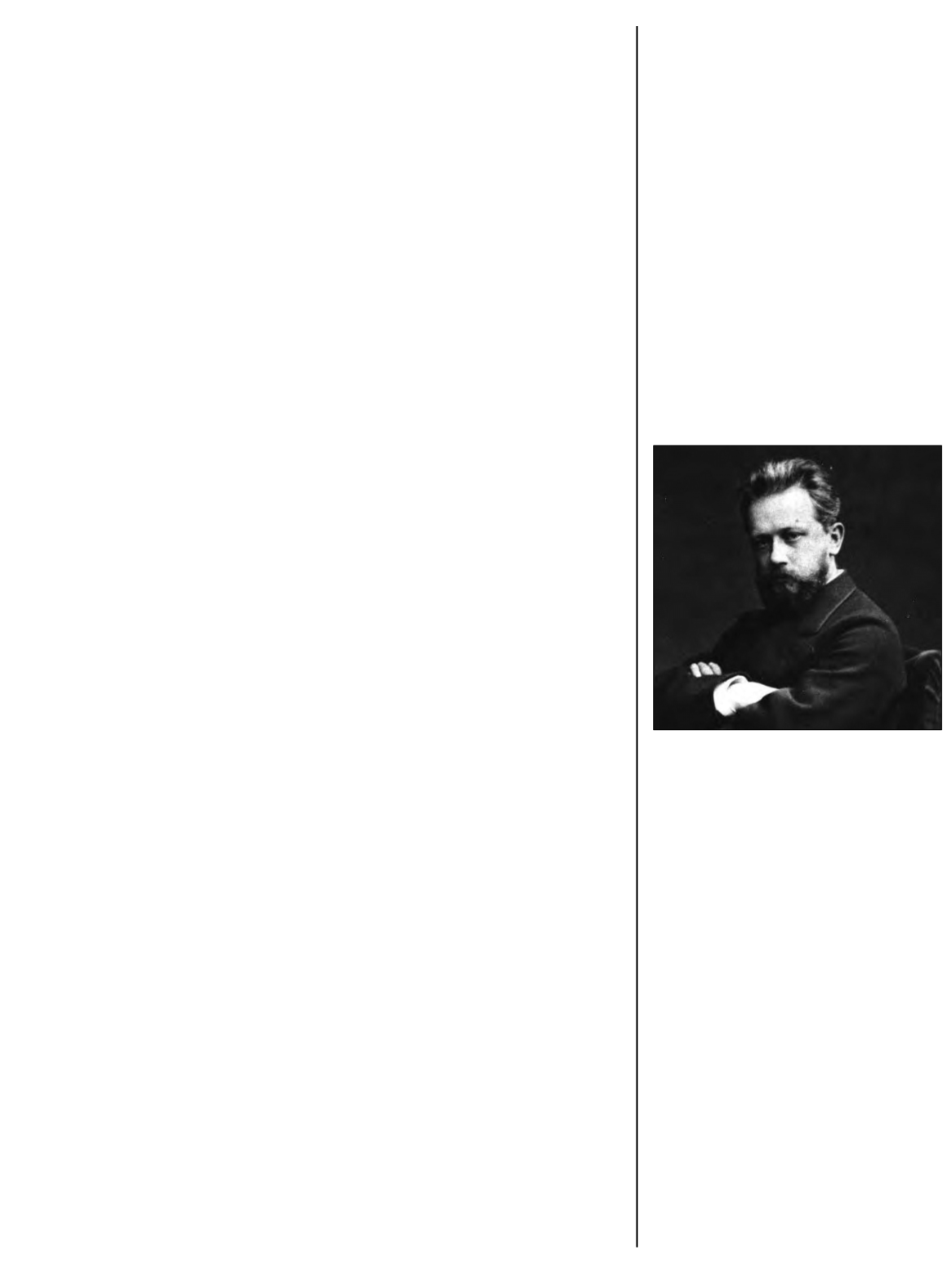

7:30 PM SATURDAY, JULY 21, 2018
PAVILION
CHICAGO SYMPHONY ORCHESTRA
KEN-DAVID MASUR,
conductor
†
INON BARNATAN,
piano
TCHAIKOVSKY SPECTACULAR
Selections from
Swan Lake
Suite
Opening Scene from Act II
Waltz
Piano Concerto No. 1
Allegro non troppo e molto maestoso
Andante semplice
Allegro con fuoco
Inon Barnatan
–Intermission–
Selections from
Eugene Onegin
Entr’acte
Waltz
Polonaise
1812
Overture
†
Ravinia debut
Ravinia is proud to feature “Charlie’s Cannons”
in tonight’s performance of the
1812
Overture.
PETER ILYICH TCHAIKOVSKY (1840–93)
Scene and Waltz from
Swan Lake
, op. 20
Scored for two flutes and piccolo, two oboes and
English horn, two clarinets, two bassoons, four
horns, two trumpets, two cornets, three trombones,
tuba, timpani, percussion, harp, and strings
Officials at the Bolshoi Theater commissioned
a full-length ballet from Tchaikovsky in 1875.
“I accepted the work, partly because I want the
money, but also because I have long had the
wish to try my hand at this kind of music.” At
that time, new ballet productions in Moscow
were a rarity. The Bolshoi had only recently
begun to shed its reputation as the Saint Peters-
burg ballet’s provincial cousin. Oftentimes the
theater imported complete productions from
the imperial capital, since Bolshoi-mounted
ballets regularly suffered from amateurish set
designs, recycled theater costumes, and shoddy
orchestral playing.
The
Swan Lake
legend had been in Tchaikovsky’s
thoughts before the commission. Several events
link the composer to his ballet subject. First, the
composer’s descendants remember a short
Swan
Lake
children’s ballet (mostly unrelated to the
more familiar ballet), written by Tchaikovsky
in 1871 or before, which was performed at pri-
vate family gatherings. The large-scale ballet
scenario likely originated during the next few
years, within one of the Moscow artists clubs
that Tchaikovsky had joined after moving to
the city. The actual librettist (or librettists) re-
mains anonymous to this day. A final influence
arose during Tchaikovsky’s visit to Bayreuth in
the summer of 1876 for the first integral perfor-
mances of Wagner’s
Ring
cycle. The portions of
these four music dramas featuring Siegfried, as
well as the virtuous swan in
Lohengrin
, may res-
onate in Tchaikovsky’s ballet scenario.
The completed
Swan Lake
score exceeded the
technical capabilities of the Bolshoi musicians
and their well-intentioned but amateur conduc-
tor, Stepan Ryabov. The work’s full effect suffered
further from tampering by the choreographer,
Peter Ilyich Tchaikovsky (1874)









